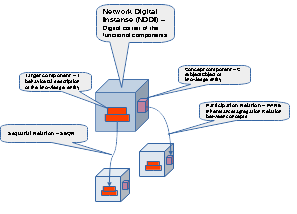GCON: Difference between revisions
No edit summary |
No edit summary |
||
| Line 22: | Line 22: | ||
A detailed representation of KLEN construction within GNOT, including these associations, is illustrated below. | A detailed representation of KLEN construction within GNOT, including these associations, is illustrated below. | ||
[[File:Animation first render.mp4 | [[File:Animation first render.mp4]] | ||
[[File:GNOT.png|thumb]] | [[File:GNOT.png|thumb]] | ||
Revision as of 08:09, 16 December 2024
Hypothesis #2: Gativus Hypothesis on Consciousness, Mind, and Thought
Gativus hypothesizes that Consciousness, Mind, and Thought are grounded in a cognitive/knowledge network (GCON). This network is composed of:
- Knowledge Entities (KLEN), and
- Specific relations interconnecting these KLENs.
Definition and Inspiration for KLEN
The concept of KLEN is inspired by the Resource Description Framework (RDF) but extends it significantly to incorporate:
- Behavioural activity capabilities, and
- Support for multiple subjects and objects in its structure.
To describe the behavioral nature of KLENs effectively, UML activity diagrams and BPMN notation are considered the most mature and widely accepted tools. These notations align with the knowledge base of the majority of computer specialists and provide robust methodologies for modelling dynamic behaviours.
KLEN Construction and Representation
KLENs are constructed using the Gativus Network Notation (GNOT). Their design maintains associations with:
- RDF principles, and
- UML class and activity diagrams.
A detailed representation of KLEN construction within GNOT, including these associations, is illustrated below.
